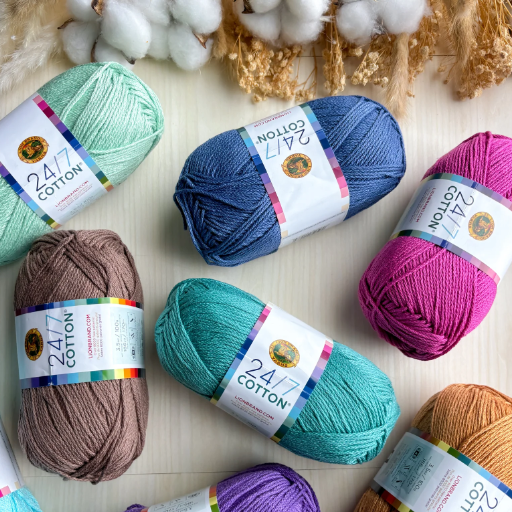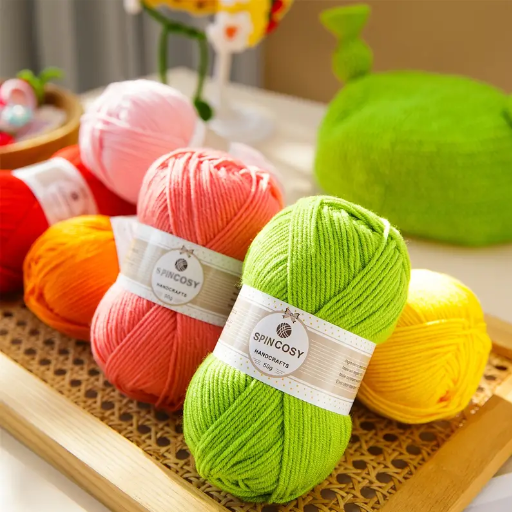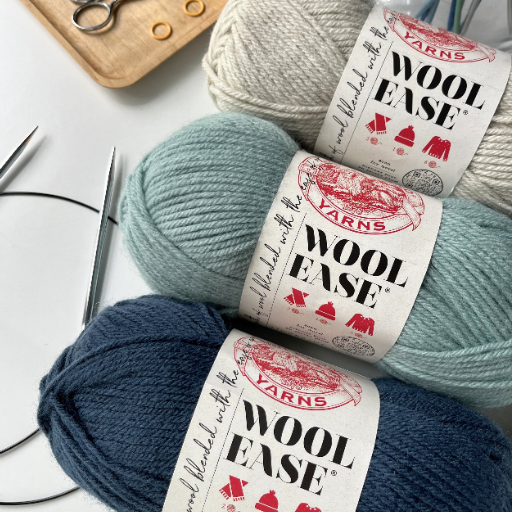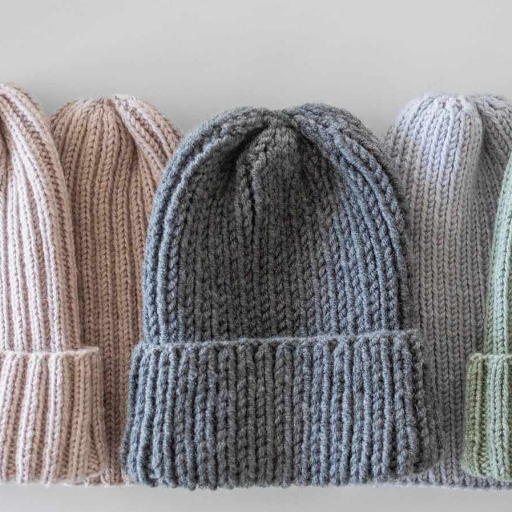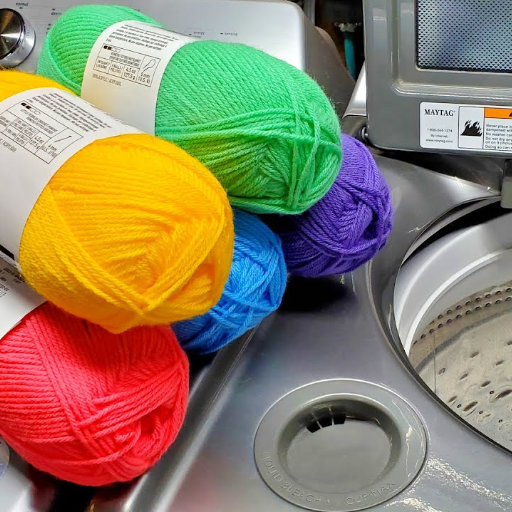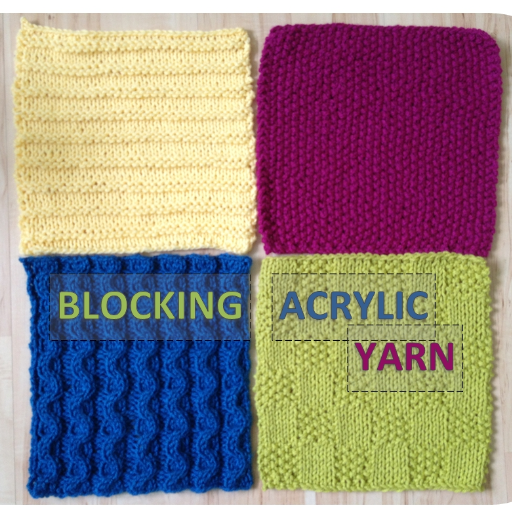In this guide, we will discuss cotton and acrylic yarn which are two of the most frequently used types of yarn. Choosing the right fiber between cotton and acrylic yarn is highly important, not only for your projects but for textile products as well including the creation of clothes and home furnishings. Both materials possess unique traits which can be beneficial for a range of activities.
Next, we analyze the touch, strength, pricing, and the region’s climate and temperature suitability. The goal of this guide is to educate both beginners and proficient crafters about the fundamental differences between the two types of yarn and aid them in picking what best suits their creative ideas.
What is Cotton Acrylic Yarn?

Cotton acrylic yarn is a blend of natural cotton fibers and synthetic acrylic fibers, combining the best properties of both materials. This hybrid yarn offers the breathability and softness of cotton while incorporating the durability, elasticity, and lightweight nature of acrylic. The blend ratio can vary, but the combination is specifically designed to enhance functionality and versatility, making it suitable for diverse projects such as lightweight garments, home décor, and accessories. Additionally, cotton acrylic yarn is often more affordable than pure natural fibers, providing an economical yet high-performing choice for crafters.
Understanding the Composition of Cotton Acrylic Yarn
Cotton acrylic yarn is usually made of different blends of cotton and acrylic fibers ranging from 50/50 blends to 70/30 blends. The cotton portion is a natural plant material which makes it breathable, offers good moisture absorption, is soft to the touch, and is good for the skin. On the other hand, acrylic fibers are not natural, so they are more durable and elastic and also more resistant to antimicrobial activities. Because of these reasons, cotton acrylic blend yarn is easier to maintain. This combination yields a fabric that keeps the comfort and appeal of natural cotton while acquiring the lightness and cheapness of acrylic. The blend can withstand adverse weather conditions, thus increasing the utility of the fabric.
Benefits of a Cotton Acrylic Blend
Cotton and acrylic fibers work in perfect harmony in a blend that has comfortable breathability and is suitable for sensitive skin for optimal comfort in warmer climates. With the addition of acrylic fibers, the fabrics’ lifespan is extended due to increased durability, elasticity, and resistance to wear and tear. Moreover, the blend is lightweight, infusible, colorfast, vibrantly colorful, and wrinkle and shrink-proof making it low maintenance and easy to care for. This fusion fabric efficiently traps air, which makes it versatile for summer and winter clothing. In addition, the blend endorses anti-microbial infection resistance which aids in maintaining hygiene and decreases the washing frequency. These reasons are what make cotton-acrylic yarn versatile in crafting, fashion, and utility.
Common Uses for Cotton Acrylic Yarn
Cotton acrylic yarn is widely utilized across various applications due to its optimal combination of comfort, durability, and ease of use. It is a popular choice for crafting projects such as knitting and crocheting lightweight garments including sweaters, cardigans, and shawls, as it provides warmth without excessive weight. The yarn’s colorfast and wrinkle-resistant properties make it suitable for creating household textiles like blankets, throws, and pillow covers, ensuring lasting aesthetic appeal. Additionally, its breathable yet insulating nature lends itself well to both summer and winter accessories, such as scarves, hats, and mittens. Cotton acrylic yarn is also commonly used for baby clothing and items, as it is gentle on sensitive skin while being resilient to wear and frequent washing. Due to its affordability and versatility, this blend is a top choice for crafting, fashion, and practical utility applications.
How Does Cotton Acrylic Yarn Compare to Other Types?

Unlike other yarns, cotton acrylic yarn is more versatile which makes it preferable due to its qualities from both natural and synthetic fibers. This type of yarn is soft and gentle, unlike pure cotton yarn which is soft, but can easily shrink and stretch. Cotton acrylic yarn is also able to withstand wear and tear, making it more stable and durable. Additionally, this type of yarn is also less coarse than pure acrylic yarn. Apart from this, cotton acrylic yarn is also much lighter and hypoallergenic, making it easier to wear for those who are sensitive to animal fibers. On top of that, this type of yarn is also affordable, easy to maintain, and very versatile which allows people to use it for multipurpose crafting and textile needs.
Acrylic vs Cotton Yarn: What’s the Difference?
Acrylic and cotton yarns have a difference in composition, characteristics, and uses. Acrylic yarn is a synthetic yarn manufactured using polyacrylonitrile fibers, which are known for their strength and toughness. It is lightweight and inexpensive makes it perfect for starters and people with low budgets. Nonetheless, breathability is also an important factor that acrylic lacks, making it uncomfortable to use in hot weather or warm places for a long time.
On the other hand, cotton yarn is made directly from cotton plants which makes it natural fiber. It is an excellent yarn that is soft, absorbent, and breathable, therefore making it perfect for use in clothing, kitchen cloths, and other projects which focus on comfort. Even though these benefits exist, cotton yarn tends to shrink and stretch after some time, and the additional weight can make certain patterns unfeasible.
In the end, the difference is based upon functionality; acrylic will usually be better for projects that will take a beating and require a price cut, while cotton will be preferred for more comfortable and pleasant feel projects. The final decision comes down to the single-use, budget, and desired outcome from the user.
Cotton Acrylic vs Wool Yarn: Which is Better?
When looking to decide between cotton and wool yarns the choice will always rely on the unique needs of the project. Wool yarn is cultivated from the fleece of sheep. It is best recognized for its warmth, and elasticity, as well as its durability. Since it excels in insulation, it is better used in colder clothes like sweaters, socks, scarves, etc. In addition, wool can also help in moisture-wicking and wrinkle-resistance. On the downside wool in some cases may pill so deft care is to be taken. In most cases, it is hand wash only and may cause shrinkage.
Cotton acrylic blends help in striking a balance between natural and synthetic fibers. Cotton blends are usually lighter in material and quite cheaper than pure wool as well as easier to take care of, often being machine-washable. Additionally, they keep some softness as well as breathability from cotton and durability and elasticity from acrylic. These add versatility which allows them to be used in a wider variety of projects starting from fragile garments to day-to-day accessories. However, cotton yarns do not offer the same level of insulation that wool does and that makes them less desirable in extremely cold places.
Both yarns have their advantages and disadvantages so look to decide which works best for your situation. Cotton blends are better for affordability, versatility, and ease in maintenance, while, wool yarns are better if insulation and elasticity are needed.
Exploring Different Types of Yarn Blends
Yarn blends combine the properties of two or more fibers, offering unique characteristics and advantages suited to various applications. Here is a concise overview of common yarn blends:
- Wool-Acrylic Blends
Wool-acrylic blends are a popular choice due to their excellent durability, warmth, and affordability. Wool contributes elasticity, natural warmth, and breathability, while acrylic adds softness, lightweight quality, and resistance to pilling. These blends are easy to maintain and widely used for winter garments, such as sweaters and scarves.
- Cotton-Polyester Blends
This blend merges the breathability and softness of cotton with the strength, wrinkle resistance, and quick-drying properties of polyester. Cotton-polyester yarn is commonly used for crafting lightweight garments, home decor, and durable accessories. Its affordability and adaptability make it one of the most versatile options.
- Silk-Wool Blends
Combining silk and wool provides a luxurious blend known for its softness, sheen, and thermal regulation. This blend is lightweight yet warm, making it ideal for high-end garments like shawls, sweaters, or elegant dresses. However, it typically requires delicate maintenance due to its premium nature.
- Cotton-Bamboo Blends
Cotton-bamboo blends are highly eco-friendly with a soft texture and excellent moisture-wicking capabilities. Bamboo adds antibacterial and sustainability benefits, while cotton ensures comfort. This blend is well-suited for baby clothes, summer wear, and breathable fabrics.
- Linen-Cotton Blends
Linen-cotton blends combine the crispness of linen with the softness of cotton, providing texture, breathability, and durability. This blend works well for warm-weather garments, such as lightweight tops and dresses, as well as decor projects like tablecloths or window treatments.
Each blend offers distinct advantages, and the choice depends on factors like intended use, climate, and budget. Always consider care requirements and specific project needs when selecting yarn blends.
What Are the Best Projects for Cotton Acrylic Yarn?

Cotton acrylic yarn is an excellent choice for projects requiring a mix of durability, softness, and versatility. Its machine-washable nature and affordability make it ideal for everyday items like blankets, scarves, and hats. Due to its lightweight yet sturdy characteristics, it is also popular for creating baby garments, lightweight sweaters, and home décor pieces such as cushions or throws. Additionally, its vibrant color retention and ease of working make it a go-to option for beginners and advanced crafters alike.
Using Cotton Acrylic Yarn for Knitting
The breathability and moisture-absorbing features of cotton, alongside the lightweight, stretchy, and durable features of acrylic make cotton-acrylic yarn highly versatile. While knitting, its soft texture makes it comfortable, which is ideal for warm-weather and everyday items. As it blends well with other fabrics, it becomes easier to work with compared to pure cotton, and still produces well-defined stitches with intricate patterns.
With an appealing balanced drape, this yarn would be perfect for summer tops, cardigans, baby clothes, and even clothes to wash dishes. Unlike other types of yarn, these pieces do not lose color vibrancy or quality over time which means they are also low-maintenance. Experienced knitters and beginners appreciate its forgiving nature with complex designs. Do remember to check the label, it will always provide recommendations on best-fit needle sizes for achieving the best results.
Crocheting with Cotton Acrylic Yarn
Cotton-acrylic yarn is popular due to its ease of use in a wide range of projects, much like that of knitting. Craftsmen can use this yarn to make durable and breathable garments and decorative items such as summer shawls, baby garments, coasters, and pillow covers. The cotton and acrylic blend also provides superb stitch retension which is vital for delicate crochet stitches. In addition, it provides a soft texture for comfortable wearing or using the products.
As stated before, this yarn type is ideal for beginners because the cotton yarn is soft and does not change shape easily, allowing for good tension and stitch capture. This yarn’s high durability and great color retention ensure that finished objects stay looking new even after lots of washes. Always check on the yarn label for the recommended hook size because the right one is important for getting the required fabric structure and drape. Cotton-acrylic yarn is extremely versatile and reliable, making it ideal for crocheters whether they are experts or beginners.
Choosing the Right Yarn for Amigurumi Projects
By considering the most important aspects woven into the fabric of yarn threading, you can achieve great results in amigurumi projects. Yarns woven from cotton or it’s blends are highly recommended because of their smoothness, excellent stitch definition, and durability which is very important for the creation of finer details of amigurumi. Besides, cotton and cotton blend yarn hold shape well and can be used for stuffed toys stubs or decorative items.
Acrylic yarn is also easy and favorable to use due to its affordability, ultralight weight, and vibrant assortment of colors. It is highly recommended for unskilled novices due to its easy-to-work-with ability. Contrarily, it has the most basic of problems, for example, in the absence of structure, cotton will result in this yarn being best suited for more soft and flexible designs.
Choosing a yarn weight that corresponds to the size of an amigurumi project, while providing a snug enough stitch to stop the stuffing from bursting out, is paramount. For beginners working on larger amigurumi designs, worsted-weight yarn is usually the preferred option, however, lightweight yarn can be used to create finer details on smaller designs. Achieving the necessary tight tension on stitches for amigurumi requires a hook size that is smaller than the one suggested on the yarn label. Finding the right combination of yarn and hook sizes can be accomplished by experimenting with making swatch samples.
Is Cotton Acrylic Yarn Suitable for Beginners?

Depending on the specific project and the skill level, acrylic yarn may or may not be suitable for beginners. Its blend combines cotton’s softness as well as the durability and elasticity of acrylic, making it easier to work with than pure cotton yarn. However, beginners should note that, unlike many other yarn options, cotton acrylic yarn does not have as much structure which lacks the shape needed to be ideal for harsh design requirements. For softer and more forgiving designs this yarn, however, is a practical choice enabling novice designers to gain hands-on experience in stitching and design handling techniques.
Why Cotton Acrylic Yarn is Easy to Work With
Due to its unique blend of fibers, cotton acrylic yarn is easy to work with because it combines the best characteristics of both materials. The yarn glides effortlessly through crochet hooks or knitting needles because the cotton component adds a soft and smooth texture, and the acrylic makes it elastic and resilient which allows stitching without splitting the yarn. Also, this blend has excellent stitch definition and provides consistent tension, making it easy to achieve goal Neeley spaced patterns. Furthermore, the yarn’s lightweight character ensures less strain during longer projects and makes it easy overseas, ensuring its reliability across all skill levels.
Tips for Beginners Using Cotton Acrylic Yarn
- Choose the Right Hook or Needles – Start with moderate-sized tools to ensure ease of handling. Tools that are too small or too large can affect tension and make stitches uneven. For cotton acrylic yarn, sizes between 4mm to 6mm are typically recommended for beginners.
- Maintain Consistent Tension – Focus on developing an even, steady tension as you work, as this blend highlights the stitch definition. Practicing with basic stitches like single crochet or stockinette stitch can help establish this skill.
- Work in Well-Lit Areas – Cotton acrylic yarn often comes in a variety of colors, including darker shades. Adequate lighting can prevent eye strain and help you see your stitches.
- Start with Simple Patterns – Opt for straightforward, beginner-friendly projects, such as dishcloths or scarves. These allow you to practice different stitches without overwhelming complexity.
- Keep Yarn Properly Tensioned – Avoid pulling or stretching the yarn too tightly from the skein, as the acrylic component can slightly stretch, affecting the finished product’s elasticity and fit.
- Learn to Correct Mistakes – Cotton acrylic yarn can be forgiving when unraveling stitches, but it’s crucial to check for accidental splits in the fiber when reworking sections of your project.
By combining these techniques, beginners can maximize their success and confidence while working with cotton acrylic yarn.
Machine Washable and Easy Care Properties
Cotton acrylic blends yarn is easy to clean and incredibly durable. Usually, this blend can be machine-washed on gentler cycles using cold or lukewarm water. The soft, breathable, cotton content, combined with the acrylic part, makes the blend resistant to fading and shrinking. To reduce the chance of stretching or pilling, placing the item in a laundry bag while washing is preferable along with avoiding harsh detergents. This drying method is simple, though some blends can withstand low-heat tumble drying. Be sure to refer to the specific care instructions for best cleaning results. This blend yarn is a great choice for clothes and home textiles that need frequent cleaning.
Where Can You Buy Cotton Acrylic Yarn?

You can obtain cotton acrylic yarn from several different retail outlets online and in person. It can be found at local craft shops, or through online suppliers including Amazon and Etsy, as well as through specific yarn companies like nitpicks and Lion Brand Wool. Lots of physical store vendors even some national chain outlets such as Joann’s and Michaels offer these blends as well. Some brands do direct sales on their websites which give customers access to a wide variety of colors and textures. Be sure to check product ratings and prices so that you can buy good yarn to suit your needs.
Top Brands Offering Cotton Acrylic Yarn
Several top brands are renowned for their high-quality cotton acrylic yarn, offering a wide range of options suited for various projects:
- Lion Brand Yarn – Lion Brand is a trusted name in the crafting community, providing a diverse selection of cotton acrylic blends. Their offerings, like the “Coboo” line, are praised for their softness and versatility, making them ideal for clothing and home textiles.
- Knit Picks – Known for premium quality and affordability, Knit Picks offers cotton acrylic yarn that is both durable and vibrant. The “Comfy Worsted” yarn is a popular choice, appreciated for its smooth texture and extensive color palette.
- Bernat – Bernat specializes in practical and cost-effective yarn blends. Their “Handicrafter Cotton Blend” combines a strong focus on durability with softness, catering to a variety of crafting needs such as baby blankets and warm-weather garments.
These brands provide reliable options across different price points, ensuring suitability for both beginners and experienced crafters.
Finding Cotton Acrylic Yarn Online
When searching for cotton acrylic yarn online, several reputable platforms consistently offer a wide variety of options for different needs:
- Amazon – Known for its vast selection and convenience, Amazon carries a wide range of cotton acrylic yarn brands, including Lion Brand, Bernat, and Knit Picks. Customers can benefit from extensive reviews, competitive pricing, and fast shipping options.
- Joann – A go-to platform for crafting supplies, Joann provides an impressive collection of cotton acrylic yarn in various weights and color options. Their frequent sales and online coupons make premium yarns more accessible for all budgets.
- Yarnspirations – Yarnspirations specializes in knitting and crochet supplies, offering detailed product guides and access to exclusive yarn blends like Bernat’s Handicrafter line. The website also features free patterns and tutorials, making it a resourceful destination for crafters.
By purchasing from these platforms, shoppers can compare prices, explore user reviews, and access tools that support their projects, ensuring an efficient and informed online buying experience.
Local Stores with a Variety of Yarn Options
Yarn crafters are often spoiled for choice and local stores enable an appreciation of hands-on crafting marketing experience. Major national chains like Joann Fabrics and Crafts and Michael’s provide an extensive selection of cotton acrylic yarns which range from major brands to in-house labels. During certain times of the year, the stores have offers which means customers will be able to find top-notch yarns at lower prices. There are also independent craft stores that cater to the crafty offering bespoke yarn blends as well as classes and social events for hobbyists. By buying in local stores, customers can check the look and feel of the yarn guaranteeing that it suits their needs while ensuring the development of the local crafting economy.
References
Frequently Asked Questions (FAQ)
Q: What are the main differences between cotton yarn and acrylic yarn?
A: Cotton yarn is made from the fibers of the cotton plant, offering breathability and absorbency, making it ideal for summer garments. Acrylic yarn is often synthetic, providing warmth, durability, and affordability, suitable for winter clothing and items that require easy care.
Q: What is a cotton blend yarn, and how does it compare to pure cotton yarn?
A: Cotton blend yarn combines cotton with other fibers like acrylic or wool to enhance elasticity, durability, and affordability. While pure cotton yarn is soft and breathable, cotton blend yarn offers a balance of cotton’s natural qualities with the added benefits of other fibers.
Q: Is cotton yarn suitable for baby yarn projects?
A: Yes, baby cotton yarn is an excellent choice for baby projects due to its softness, hypoallergenic properties, and breathability, ensuring comfort for sensitive skin.
Q: Can I use acrylic yarn for amigurumi projects?
A: Yes, acrylic yarn is often used for amigurumi projects because it holds shape well, is durable, and comes in various colors, making it a versatile choice for creating stuffed toys.
Q: What is DK weight yarn, and is it suitable for both knitting and crocheting?
A: DK (double knitting) weight yarn is a medium-weight yarn suitable for both knitting and crocheting. It strikes a balance between lightweight and heavier yarns, making it versatile for various projects.
Q: How does cotton acrylic blend yarn differ from pure acrylic yarn?
A: Cotton acrylic blend yarn combines the breathability and softness of cotton with the durability and easy-care properties of acrylic. This blended yarn is often softer than pure acrylic yarn and provides more comfort in garments.
Q: What is the best yarn for beginners to start crocheting or knitting?
A: For beginners, a medium-weight yarn like DK or worsted-weight yarn is recommended. Soft yarn, such as a cotton blend or acrylic yarn, is also ideal as it is easy to work with and comes in various colors.
Q: Can cotton yarn be used for blanket projects?
A: Yes, cotton yarn’s breathability and softness make it a good choice for lightweight blankets, particularly suitable for warmer climates or summer use.
Q: What types of projects are best suited for soft milk cotton yarn?
A: Soft milk cotton yarn is ideal for projects requiring a gentle touch, such as baby garments, accessories, and lightweight blankets, ensuring comfort and softness.
Q: How does the weight of yarn affect my project choice?
A: The weight of yarn influences the thickness and warmth of the final product. Lighter yarns like sport weight are ideal for delicate items, while heavier yarns like chunky yarn are better for warm, cozy garments and accessories.








